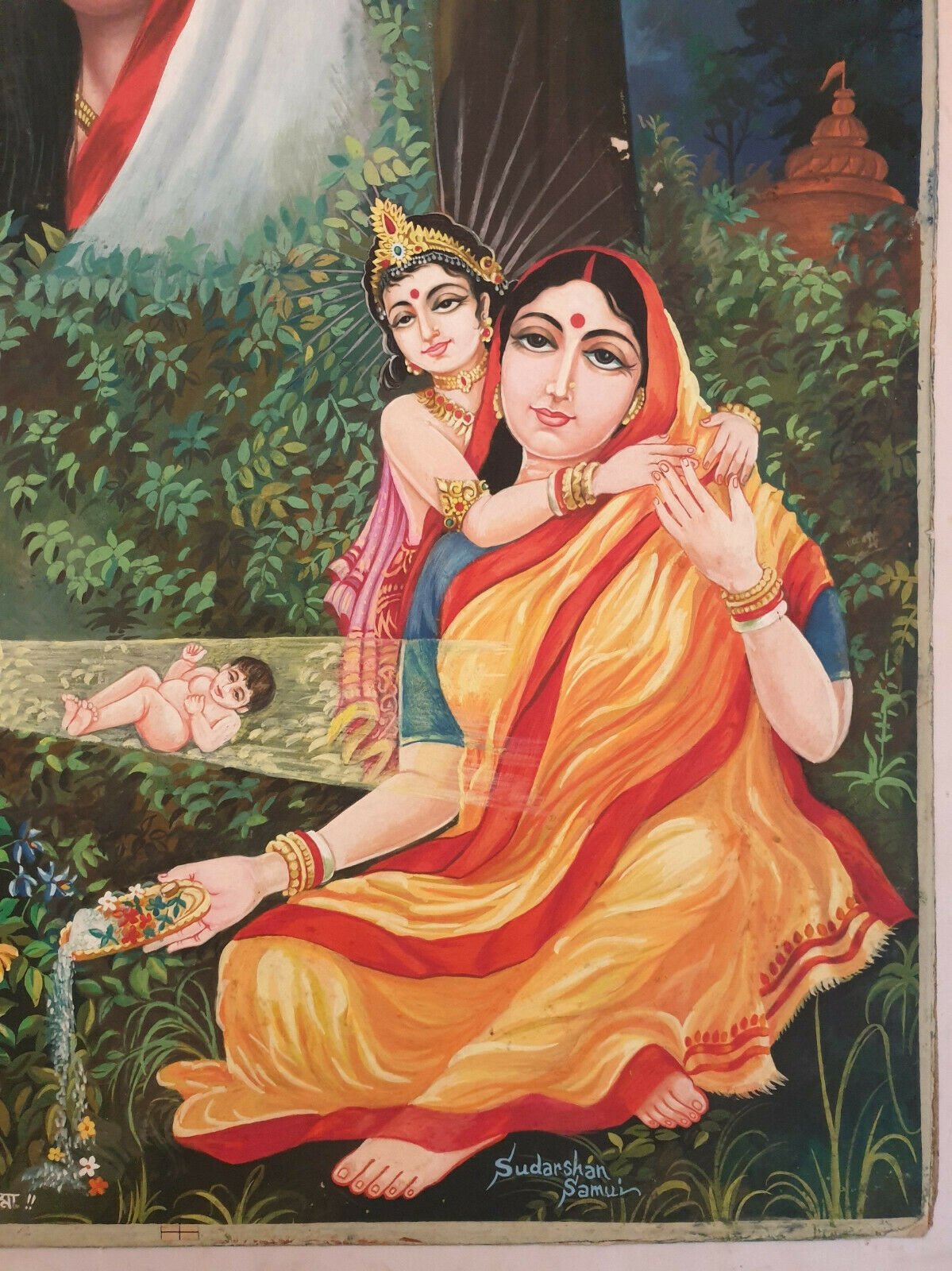
Early Life and Marriage
Born Saradamani Mukhopadhyaya on December 22, 1853, in Joyrambati, a small village in West Bengal, to a devout Brahmin couple, Ramachandra Mukhopadhyaya and Shyama Sundari Devi. From childhood, she showed deep spiritual tendencies, a loving nature, and a fondness for serving others.
At the age of five, she was married to Sri Ramakrishna, who was then twenty-three. The marriage was unconventional; when she came to Dakshineswar as a young woman, she found Sri Ramakrishna deeply absorbed in spiritual practices, devoid of worldly consciousness. Far from being an ordinary wife, she became his first disciple and a spiritual companion, living a life of extreme purity and devotion.
The Holy Mother at Dakshineswar
At Dakshineswar, she dedicated herself to serving Sri Ramakrishna and his numerous disciples. She cooked, cleaned, and cared for everyone with immense motherly affection. Despite the challenges, she maintained an inner peace and a profound spiritual state. Sri Ramakrishna himself worshipped her as the Divine Mother, performing the Shodashi Puja (worship of the Divine Mother) with Sarada Devi enthroned as the living deity, affirming her divine nature.
Her life with Sri Ramakrishna was a unique example of a spiritual partnership where both helped each other in their divine realization, transcending conventional marital bonds.

After Sri Ramakrishna's passing in 1886, Holy Mother continued his spiritual mission. She became the spiritual guide and protector of the monastic order and thousands of devotees. She spent her later years primarily between Joyrambati and Calcutta (Kolkata), guiding spiritual aspirants, enduring immense physical suffering with composure, and radiating unconditional love.
Her simplicity, universal outlook, and boundless compassion attracted people from all walks of life. She accepted everyone as her own child, irrespective of their background, caste, or creed. She never refused anyone who sought her solace and spiritual guidance.
Teachings and Legacy
Holy Mother's teachings were often simple, practical, and profound, rooted in her own lived experience. She emphasized purity, patience, perseverance, and, above all, unconditional love. She taught that "If you want peace of mind, do not find fault with others. Rather see your own faults. Learn to make the whole world your own. No one is a stranger, my child; the whole world is your own."
She passed away on July 20, 1920. Her life stands as a beacon of selfless service, unconditional love, and spiritual motherhood, revered by millions as the Holy Mother. Her spiritual presence continues to inspire the Ramakrishna Math and Ramakrishna Mission in their work of spiritual upliftment and service to humanity.
